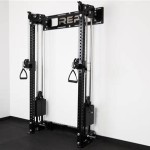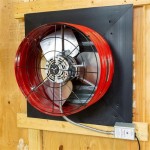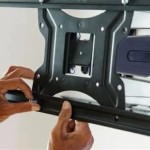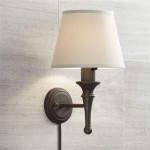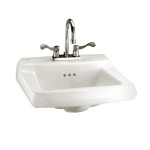Ring Wall Mount for Solar Panels: A Comprehensive Guide
Solar panels are becoming increasingly popular as a sustainable energy source, and with their rising popularity comes a need for efficient and secure mounting solutions. One such solution that has gained traction is the ring wall mount for solar panels. This type of mount offers a unique and often advantageous approach to securing solar panels, particularly for residential and commercial installations where space optimization and aesthetics are crucial.
This article will provide a comprehensive overview of ring wall mounts for solar panels, exploring their advantages, disadvantages, installation considerations, and comparison to other mounting options. The information provided will empower readers to make informed decisions about whether a ring wall mount is the right choice for their solar energy project.
Understanding Ring Wall Mounts for Solar Panels
A ring wall mount, as the name suggests, utilizes a circular frame or ring that encircles the solar panel and is secured to the wall. This design differs from traditional racking systems, which typically involve individual brackets or rails for mounting each panel. The ring structure provides a secure and rigid platform for the panel, while the wall-mounted design offers flexibility in terms of placement and integration with existing structures.
These mounts are often made of durable materials like aluminum or steel, ensuring longevity and resistance to weather conditions. They come in various sizes to accommodate different panel dimensions, and some models offer adjustable features for optimal panel tilt angle and alignment. The ring's design allows for the installation of multiple panels in a compact arrangement, maximizing space utilization.
Advantages of Ring Wall Mounts
Ring wall mounts for solar panels offer several advantages compared to other mounting options, making them attractive for a range of applications.
1. Space Optimization and Aesthetics
One of the most significant benefits of ring wall mounts is their ability to optimize space. The circular design allows for efficient installation of multiple panels in a compact area, making them ideal for smaller rooftops, balconies, or even vertical walls. Their sleek and unobtrusive design also contributes to the aesthetics of the installation, blending seamlessly with the surrounding architecture.
2. Enhanced Stability and Security
The ring structure provides a secure and stable foundation for the solar panels, minimizing the risk of movement or damage due to wind or other external forces. The circular support distributes the weight of the panels evenly, enhancing stability and longevity. The wall-mounted design offers additional security, reducing the risk of theft or vandalism.
3. Ease of Installation and Maintenance
Ring wall mounts often benefit from relatively straightforward installation, particularly for smaller projects. The pre-assembled components and intuitive design streamline the process, requiring less time and expertise compared to some other mounting systems. Maintenance and cleaning of the panels are also simplified due to the accessible design and the removal of any obstructions from the panel's surface.
Disadvantages of Ring Wall Mounts
While ring wall mounts offer numerous advantages, it's important to consider potential downsides as well.
1. Limited Panel Orientation
One limitation of ring wall mounts is their fixed orientation. The circular design typically restricts the panel's angle to a certain range, potentially affecting the optimal solar energy harvesting throughout the day. This limitation may be less of a concern for installations with good solar exposure throughout the day but could be a factor for locations with specific sun angles.
2. Weight Considerations
Ring wall mounts have a weight limit, depending on the design and mounting structure. It's essential to ensure that the wall can adequately support the weight of the panels and the mounting system, especially if installing multiple panels. Improper weight distribution can potentially lead to structural damage, so careful consideration of the wall's load-bearing capacity is crucial.
3. Potential for Shadowing
While space optimization is a key advantage, the compact arrangement of panels within the ring structure can lead to potential shadowing issues. Depending on the panel's orientation and spacing, one panel might cast a shadow onto another, reducing overall energy output. Careful planning and consideration of the surrounding environment are necessary to mitigate this risk.
Installation Considerations
Installing a ring wall mount for solar panels requires careful planning and execution to ensure a secure and efficient setup. Several key factors need to be considered before and during installation.
1. Wall Strength and Load-Bearing Capacity
The wall where the ring mount will be installed must be structurally sound and capable of supporting the weight of the panels. Consulting a qualified engineer or structural specialist to assess the wall's load-bearing capacity is highly recommended. The assessment should consider factors such as the wall material, thickness, and any existing anchor points.
2. Panel Size and Orientation
Choose a ring mount that is compatible with the size and type of solar panels you will be installing. Consider the panel's width, height, and weight when selecting the appropriate ring and mounting hardware. Also, determine the ideal orientation for the panels to maximize sunlight exposure throughout the day. This may involve considering the surrounding landscape and obstacles that could impact panel placement.
3. Electrical Wiring and Connections
Ensure that the electrical wiring and connections for the solar panels are properly installed and meet all relevant electrical codes and safety regulations. This may require the assistance of a licensed electrician to ensure safe and efficient operation of the solar system.
4. Permission and Regulations
Check with your local building department or homeowner's association for any regulations or permits required for installing solar panels and mounts. These regulations could involve requirements for specific installation methods, materials, or inspections. Understanding these requirements before starting the installation process will prevent any delays or complications.
Comparison With Other Mounting Options
Ring wall mounts are just one of several options for mounting solar panels. Comparing ring mounts to other systems can help determine if they are the best choice for your needs.
1. Roof Mounts
Roof mounts are the most common type of solar panel mount. They are typically installed on the roof of a building, using rails and brackets to secure the panels. Roof mounts offer flexibility in terms of panel orientation and provide ample space for larger installations. They often come in various configurations to accommodate different roof types and materials.
2. Ground Mounts
Ground mounts are ideal for large-scale solar projects or when roof space is limited. They are installed directly on the ground, often using pre-engineered structures that support the panels at a specific tilt angle. Ground mounts offer maximum flexibility in terms of positioning and are well-suited for open fields or areas with limited roof availability.
3. Pole Mounts
Pole mounts are used to install solar panels on poles, typically made of steel or concrete. They are often used in areas where space is limited or where a ground mount is not feasible. Pole mounts offer good stability and provide flexibility in terms of height and orientation. They are commonly found in parking lots, commercial areas, or remote locations where ground-mounted systems are not practical.
The choice between a ring wall mount and other mounting options depends on factors like the size of the solar system, available space, roof design, and budget. Each type of mount has its advantages and disadvantages, and careful assessment of these factors is crucial for making an informed decision.

Ring B09cbzsvl6 Wall Mount For Solar Panels And Cams White

Ring Wall Mount For Solar Panels And Cams White B09cbzsvl6

Ring B09cbzsvl6 Wall Mount For Solar Panels And Cams White

Ring Wall Mount For Solar Powered Panels And S In Black

Ring B09cbzsvl6 Wall Mount For Solar Panels And Cams White

Ring Wall Mount For Solar Powered Panels And S In Black

Weatherproof Gutter Mount Bracket For Ring Super Solar Panel

Wasserstein 2 In 1 Universal Pole Mount For Wyze Blink Ring Arlo Eufy Solar Panel White

2 In 1 Wall Mount For Ring Stick Up Cam Spotlight Super Solar Panel

Wasserstein Gutter Mount Compatible With Ring Arlo Blink Reolink Cams And Solar Panels 1 Pack White



